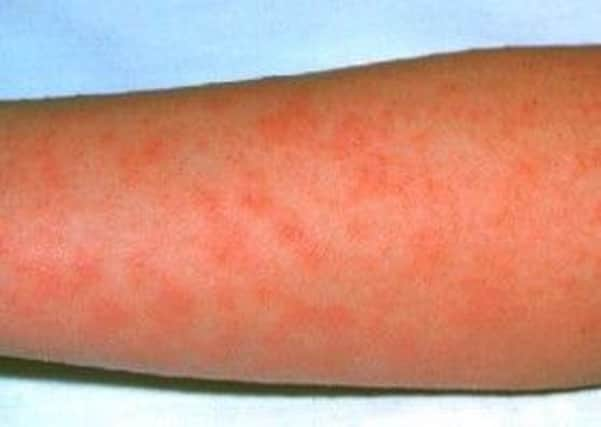Scarlet fever link to rise in infections across West Yorkshire


The region currently has the highest rates of invasive group A streptococcal (iGAS) disease in the country.
Already this year there have been almost double the expected number of cases of the infection, a more serious manifestation of the same bug which causes scarlet fever. Up to a quarter of those suffering from iGAS disease will die from it.
Advertisement
Hide AdAdvertisement
Hide AdDoctors have been warned about rare but potentially severe complications and told to carefully monitor patients who may be affected.
The country is currently in the grip of a scarlet fever outbreak, with high levels of the illness for the third winter running, particularly in Yorkshire.
The illness is caused by group A streptococci bacteria, which is often found on the skin or in the throat and causes other ailments including tonsillitis and ear infections.
But in the more serious disease - which usually affects vulnerable patients - the bacteria can penetrate deeper and cause illnesses like meningitis, sepsis, pneumonia and necrotising fasciitis, known as the ‘flesh-eating bug’. A spokesman for Public Health England said: “Approximately 15 to 25 per cent of people who develop an iGAS infection will, unfortunately, die from it.
Advertisement
Hide AdAdvertisement
Hide Ad“However, this varies considerably depending on the individual’s age, type of infection, general health condition before the infection and the strain causing the infection.”
Scarlet fever - which mainly affects children under 10 - is highly contagious, but antibiotics are usually effective in treating it. Parents are reminded that it is vital to see a GP quickly and ensure children complete their course of medication.
The more serious iGAS infection mostly affects adults and those with other health conditions are especially at risk.
Latest figures show there have been 121 iGAS cases in Yorkshire and the Humber in the 2015/16 winter season, compared to an average of 65 for the previous five winters.
That equates to 2.3 cases per 100,000 people, the highest in the country.